Special exhibition 2024: legacy of Gerard Höweler
In addition to the individual works of more than 30 artists, we are presenting a special exhibition this year dedicated to the late Gerard Höweler (1940 – 2021) and his legacy. The heirs of Gerard Höweler have asked us to take care of his oeuvre and that is why all statues and models from his studio can now be found in our sculpture garden.
Arthur Broek, owner of the sculpture garden and also architect, has designed and built an installation especially for the work of Gerard Höweler. A total of more than 120 works and models have been brought together in an architectural presentation. By presenting his oeuvre in this way, the beauty of all the works comes together, while each individual work also comes into its own beautifully. We are very grateful and proud to be able to present this special exhibition this year in addition to the individual works of various artists.
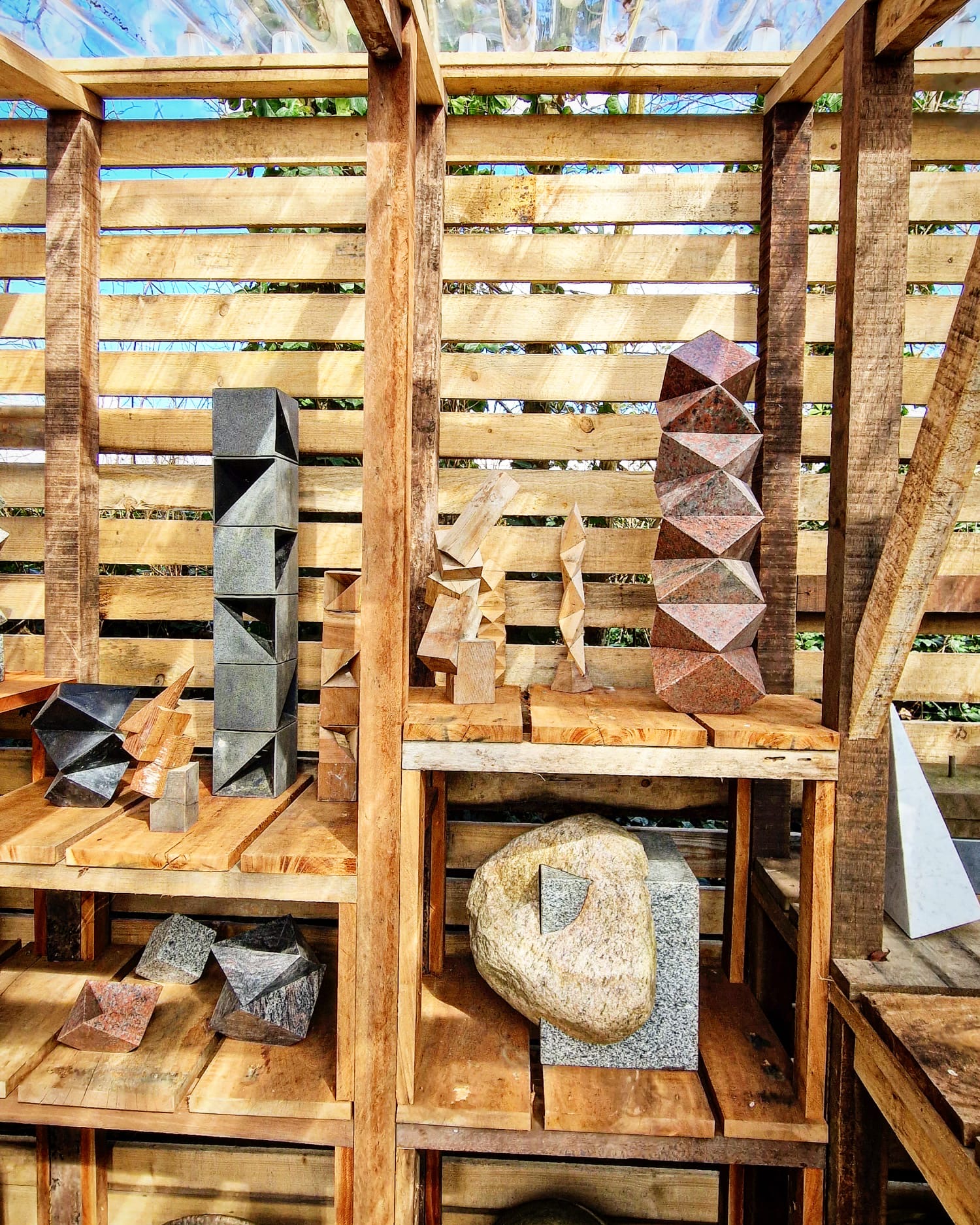
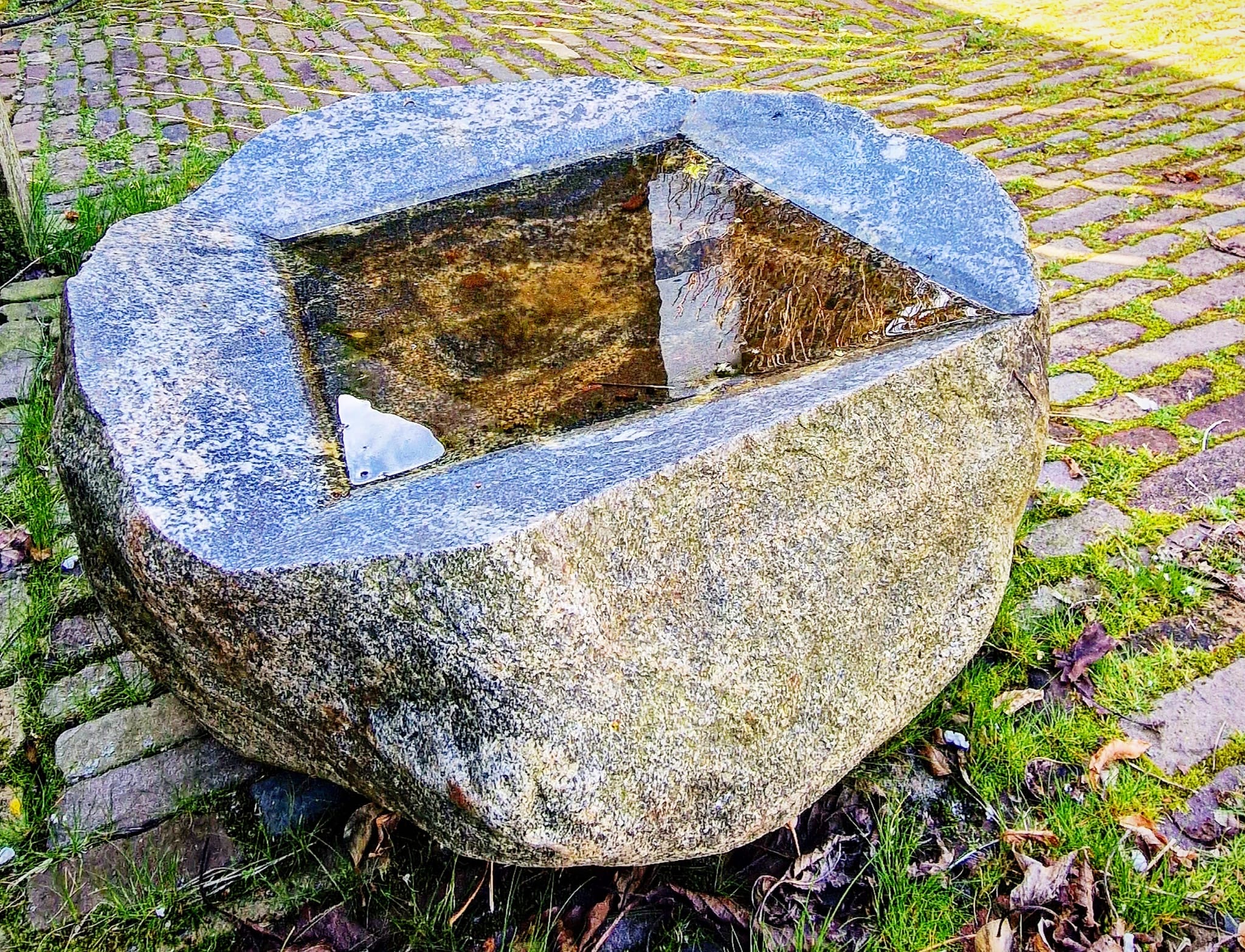
To draw attention to the work of Gerard Höweler, the sculpture garden is also initiating a series of conversations this season with experts of his oeuvre and people who knew him. We will record these conversations in images and writing and publish them on this website.
In the letter below written by Arthur Broek in 2017, we hope to give you an impression of our appreciation for Gerard Höweler as a person and as an artist.
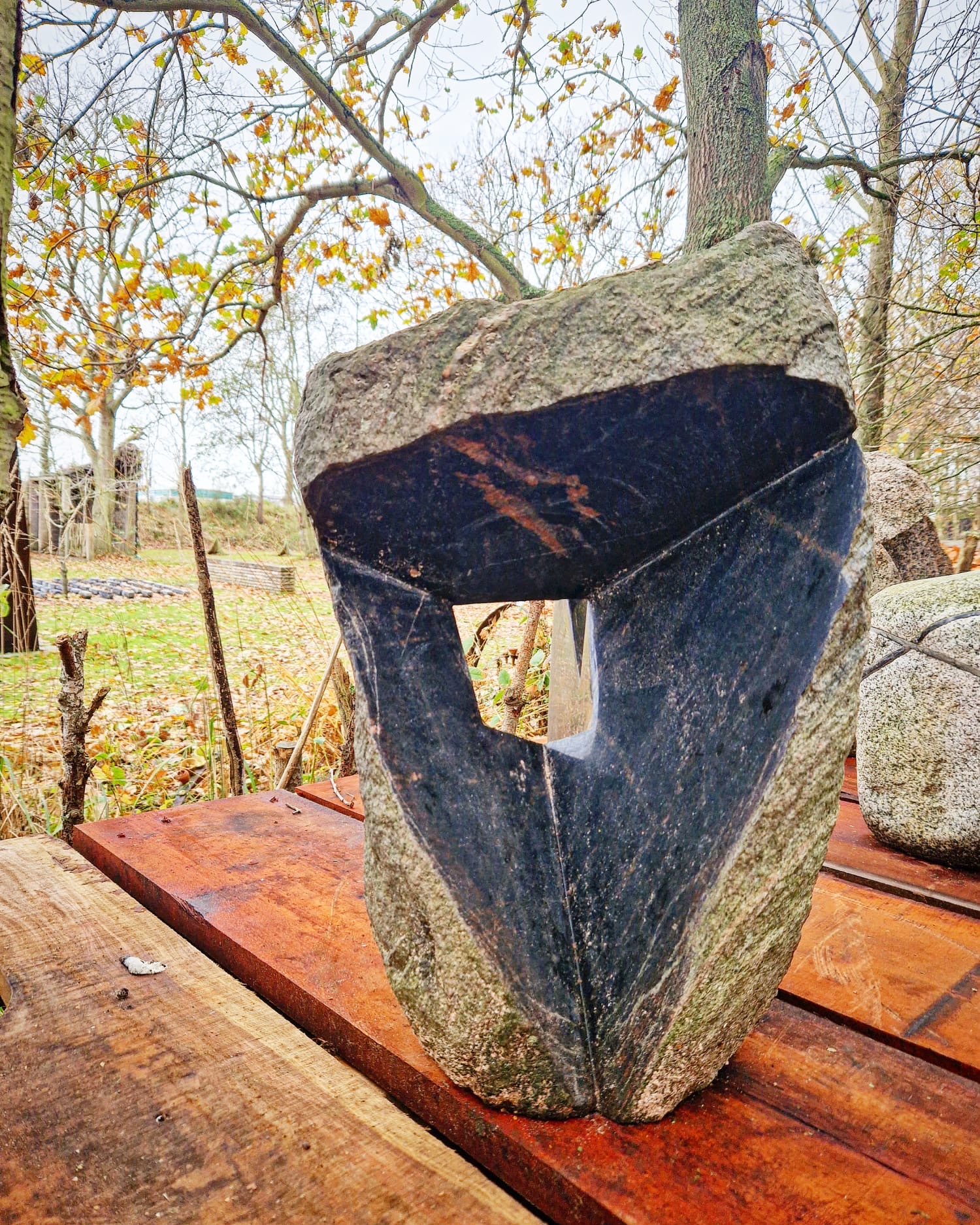
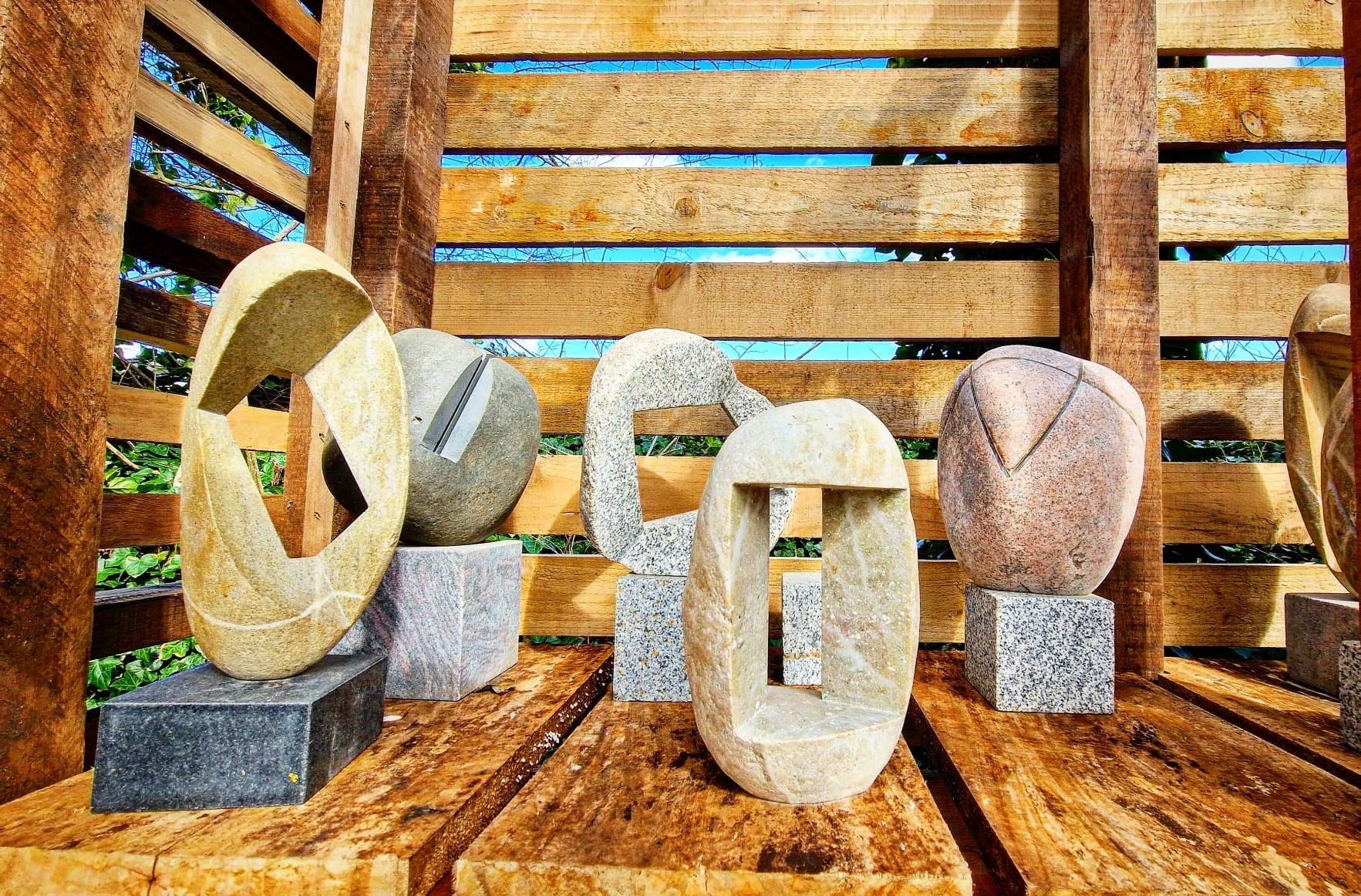
To Gerard Höweler - RIP
Ouddorp, August 16, 2017
Dear Gerard,
Every day, sometimes several times a day, I walk past your work. I look at it from different directions, and I sit there under different (weather) conditions. With a drink sometimes, or with 2 black tomcats who have followed me and who love the warm appearance of the stones at the end of the day. I talk about it with various people who visit the sculpture garden. I am drawn to it like a magnet and the fascination only increases.
The images (re)present a world; an attitude towards the craft (sculpture) and the material (stone); (re)present an idea about a position of the image in space and in society. The image stands in a certain tradition and continues it; In short, contact with your work leads to reflections and questions, driven by wonder, to which the answers – if there are any – can probably only be given by you.
Please do not feel obliged to respond to these comments/questions; Writing it down already creates a certain order and you can also see this writing as information about how someone who greatly appreciates your work thinks about it.
A quote that I found from Vitruvius (Architecture manual, book 6, par. 1) actually reflects this fascination well: “When the philosopher Aristippus, a student of Socrates, was thrown onto the beach of Rhodes after a shipwreck and saw figures drawn, he shouted: ‘It looks hopeful for us, because I see traces of people’.”
That is also the case with your work – apart from all the other facets, about which more later. It looks hopeful, because I see traces of people. The intervention in the stone adds value, adds more value to the stone. We hardly pay attention to the stone in nature, of which there are thousands in various places. Sometimes we can be ‘caught’ by a special shape, because a stone resembles a human artifact or something like that. Or because there are marks or scratches on it that resemble human traces, or because the stone bears traces from the past, fossils for example. Only when people choose a stone and start carving it or joining it with other stones does our interest become aroused. Two stones placed on top of each other or opposite each other is perhaps the first sculpture. Or perhaps it is the scratch or mark made in the ‘skin’ of the stone; there and then it starts. And it is moving to see that people stand up, take the trouble, imagine themselves strong enough, to make and leave something of themselves, a sign or a message. Not necessarily to say ‘here I am’, but mainly to define his world and understand who he is. And conversely: seeing a trace on a stone means that you are not alone… someone has gone before you, there are people, there is hope.
A second quote (I just don’t remember where I found it): “Stone carving is irreversible, there is no way back.”
In your work you clearly see the love for (the) stone. But what does this actually mean: is there love for the stone for what it is, with its millions of years of history, or is this love for what the stone can be, after or because of the processing/damage that you will carry out as a sculptor?
Lately I have been gathering as much information as possible about your work through books and the internet. These texts and photos seem to reveal a certain development in your work, which can be described in a number of phases:
Phase 1: it seems as if the first phase is mainly characterized by processing the surface of the stone into a plastic whole, with the expression of opposites (flat/rough, round/square, etc.).
Phase 2: then you place the stones opposite each other in the room, with the various contrasts still present (flat/rough, worked/unworked, spherical/rod-shaped, etc.).
Phase 3: then you penetrate the closed mass of the stone itself. Space and light are brought inside. But also now, and perhaps even more strongly, the contrasts (inside/outside, flat/rough, natural/geometric, nature/culture, etc.).
Does one also arise from the other? Are there considerations that lead to the next phase? Can these phases be clearly distinguished from each other or do they also arise from ‘banal’ matters such as the material available, a specific assignment that led to a specific work or available resources?
One of the most striking features of your work is of course the penetration of the stone; removing material from the interior of the stone, so that a geometric space, or incision, is created. When and how do you decide to enter the stone and not as part of a total form, but precisely to represent the contrast inside/outside, and thus the spaciousness?
It seems as if with the penetration of the stone and thus the overall shape of the stone, and by that I mean the rough, of course almost always more or less spherical shape, leaving it intact, the stone is increasingly dependent on itself, standing alone more and more easily. (for this stone is chosen to be worked); much and therefore much less in a spatial relationship with other stones and/or objects and does not need them. Yet the stones, placed together as they are now in our garden, make each other stronger in a more free relationship. How did that happen? Could that be because of the relationship between interventions? Because putting the stones together in the same way without the interventions would be much less strong. The intervention that sets the stone more apart means that it simultaneously has more of a relationship with the other stones (oh, wonderful paradox).
With the stones in our garden, the intervention is always exactly so large that the entire stone is involved, without the main shape falling apart. How do you determine that intervention? Is it by looking at the stone for so long and ‘seeing’ what the stone can ‘have’ or ‘what is in the stone’? Or is that just trying, seeing what works? Or do you work in series/themes, where the stones are more of a ‘leading’ object? In other words: is there the idea first and do you look for the stone to match it, or does the idea arise after you know the stone?
Knowing that stone carving is irreversible and therefore there is no way back makes your work even more fascinating; the precision of the interventions suggests enormous certainty and determination. And of course this can only be achieved through extensive knowledge of materials and tools and with a lot of control and patience.
Although craftsmanship in itself does not lead to art, it seems to me that in your work it is a prerequisite for creating it. There is not only a love for the stone, but also a love for working the stone; the chopping, grinding, polishing, the sometimes rhythmic actions, which slowly but surely create the final form. How does that work for you? Is it necessary for you to process the stone yourself or could you also imagine that the work is outsourced, for example in China? Do you make adjustments while working, or does something different sometimes come out of the stone after you have ‘touched’ the stone? What steps in that editing process are you really looking forward to? Is that making the large shape, or finishing it after the shape is clear?
Maybe it’s all too many words and the above is ultimately about the same thing, the words are beating around the bush. Perhaps my fascination with your work says as much about myself. Yet…. for me the fact remains: I was and am touched by your work and not the other way around. Hence these words.
Greetings from the sculpture garden,
Arthur Broek
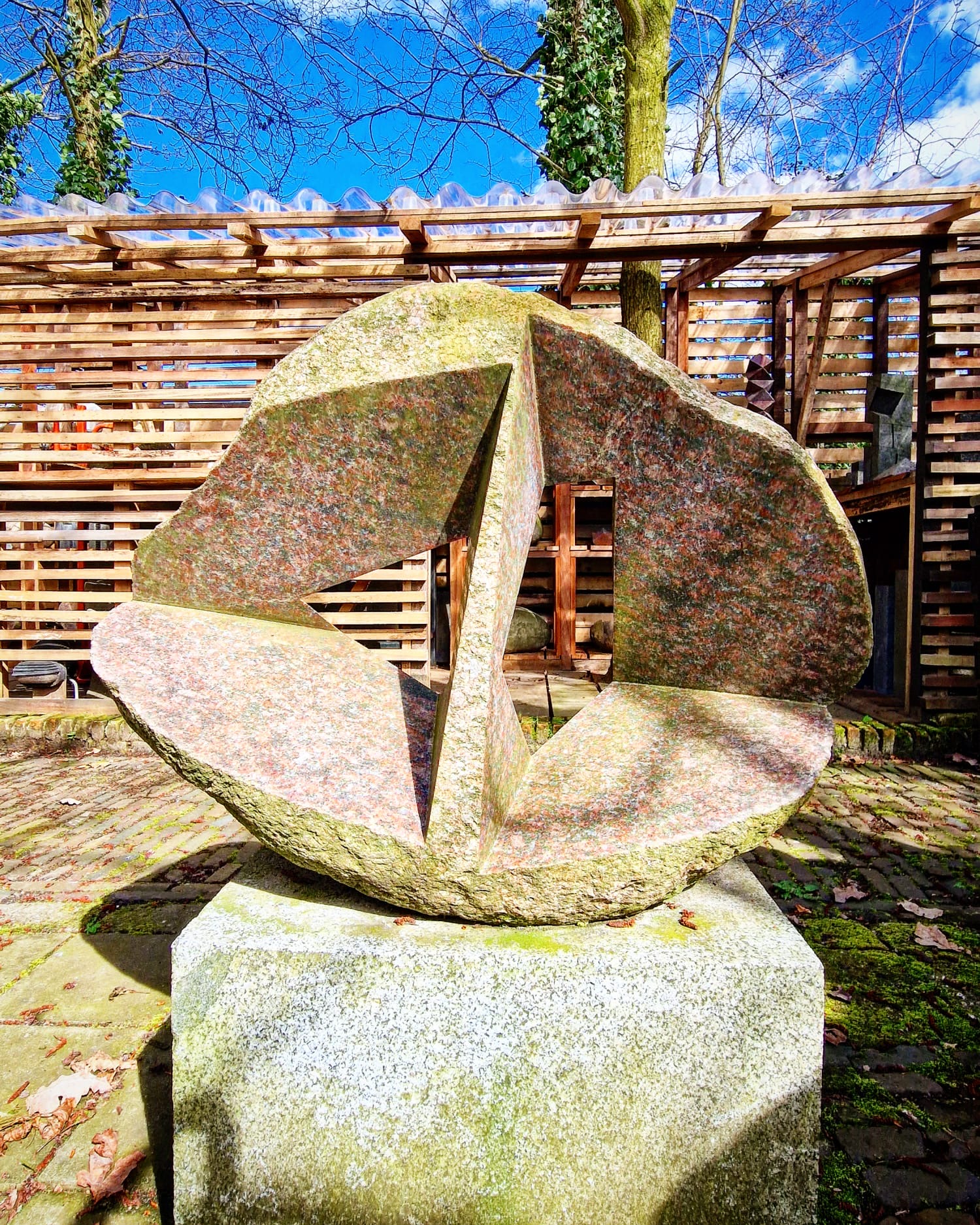
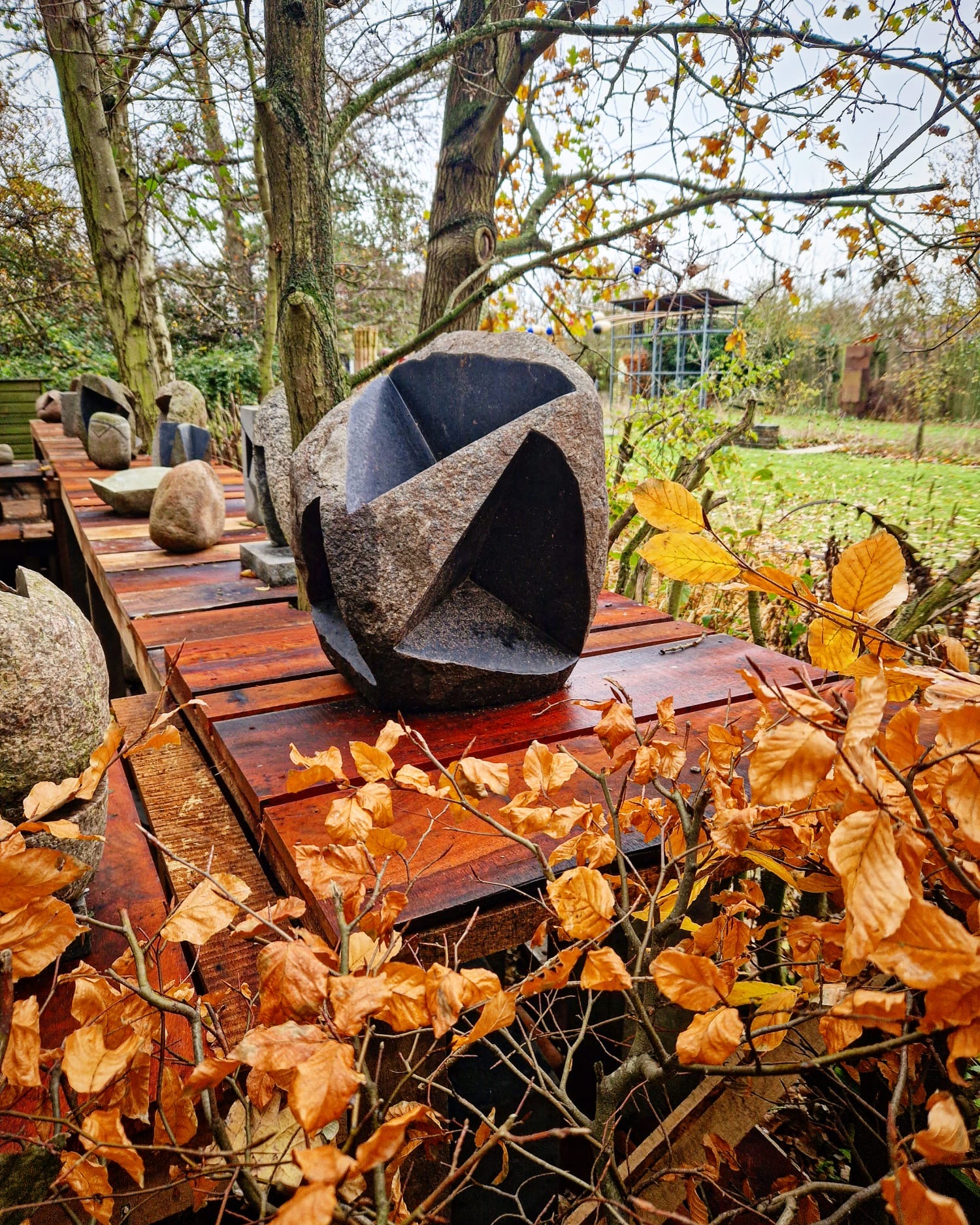
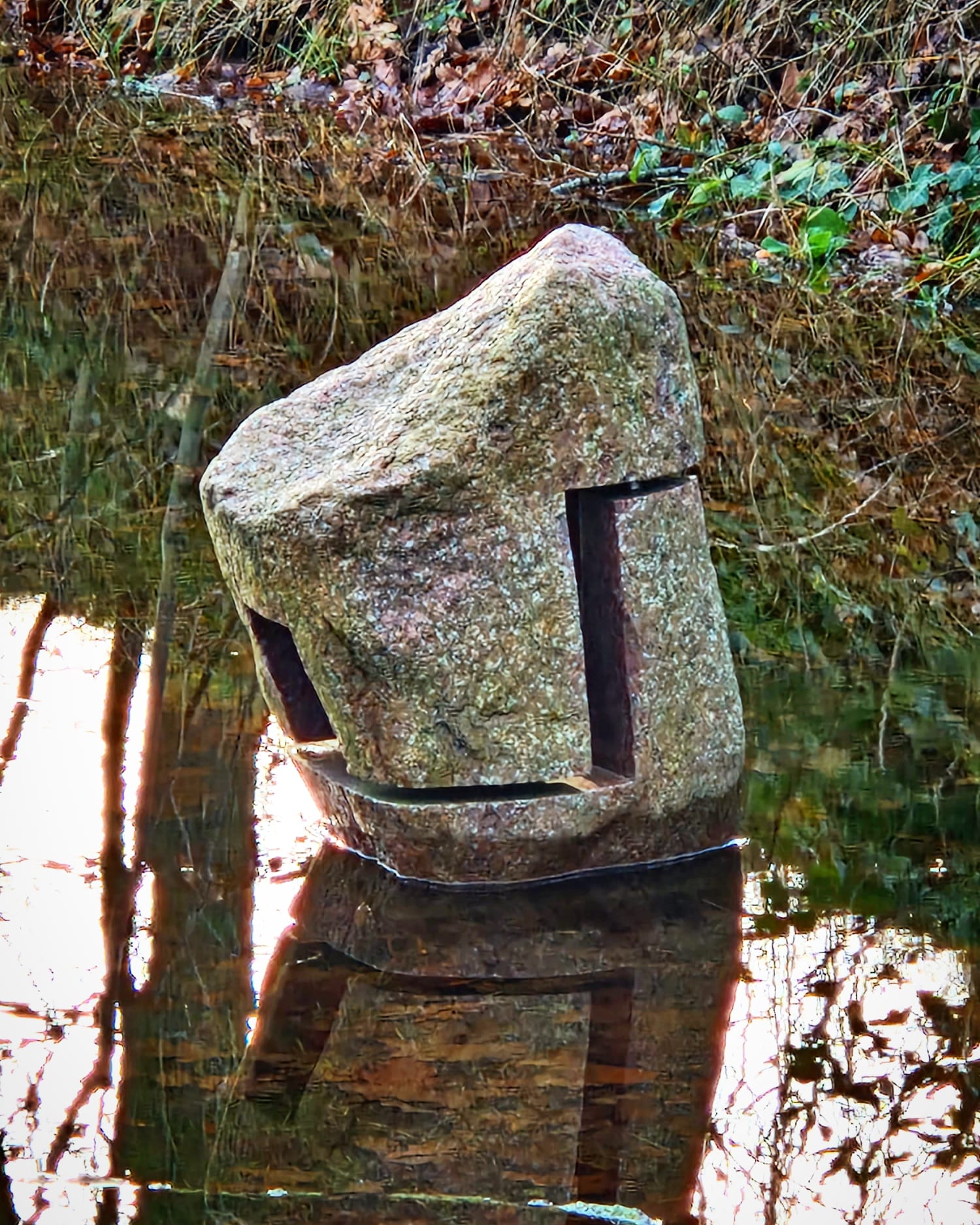
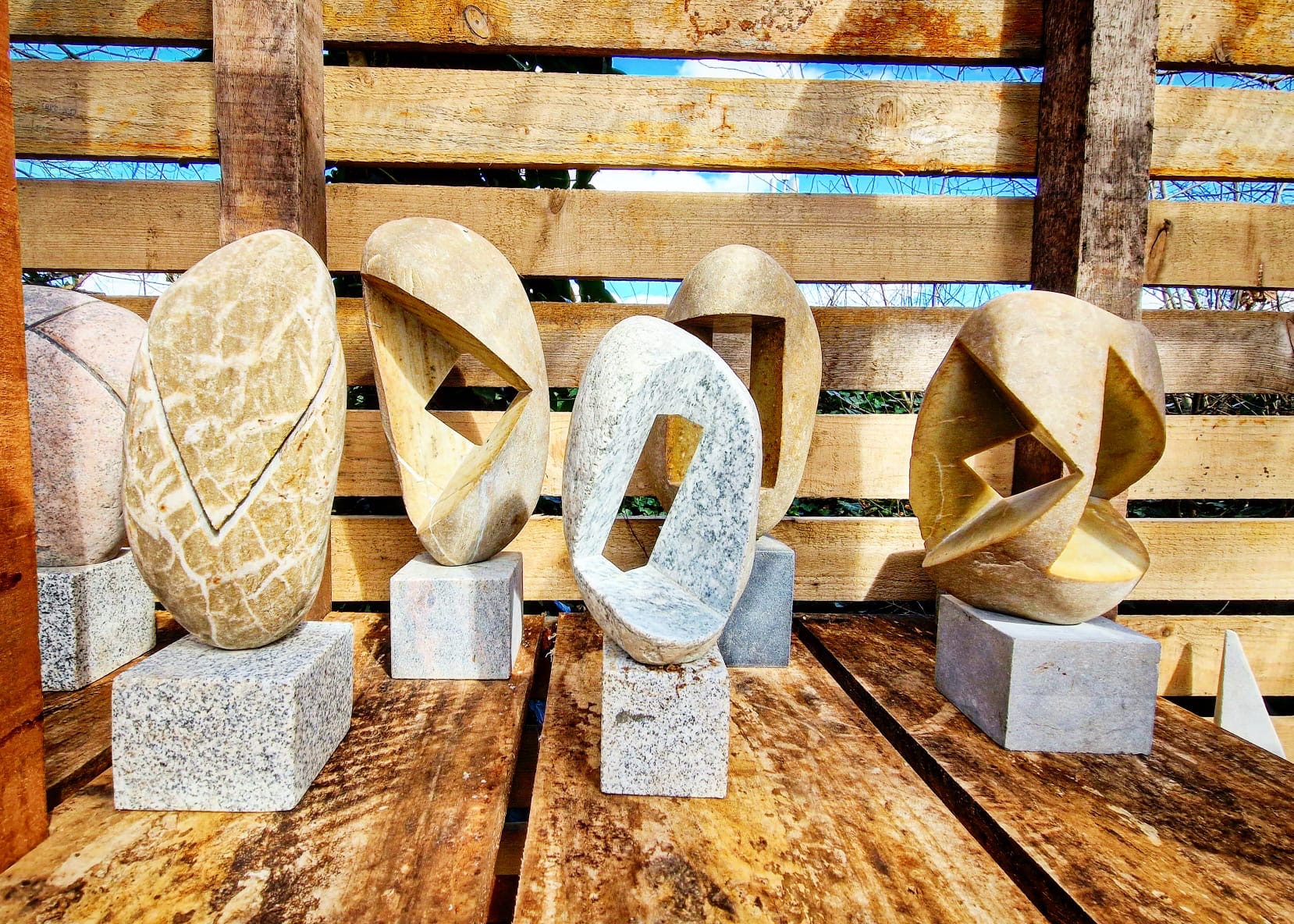

To draw attention to the work of Gerard Höweler, the sculpture garden is also initiating a series of conversations this season with experts of his oeuvre and people who knew him. We will record these conversations in images and writing and publish them on this website.
In the letter below written by Arthur Broek in 2017, we hope to give you an impression of our appreciation for Gerard Höweler as a person and as an artist.

To Gerard Höweler - RIP
Ouddorp, August 16, 2017
Dear Gerard,
Every day, sometimes several times a day, I walk past your work. I look at it from different directions, and I sit there under different (weather) conditions. With a drink sometimes, or with 2 black tomcats who have followed me and who love the warm appearance of the stones at the end of the day. I talk about it with various people who visit the sculpture garden. I am drawn to it like a magnet and the fascination only increases.
The images (re)present a world; an attitude towards the craft (sculpture) and the material (stone); (re)present an idea about a position of the image in space and in society. The image stands in a certain tradition and continues it; In short, contact with your work leads to reflections and questions, driven by wonder, to which the answers – if there are any – can probably only be given by you.
Please do not feel obliged to respond to these comments/questions; Writing it down already creates a certain order and you can also see this writing as information about how someone who greatly appreciates your work thinks about it.
A quote that I found from Vitruvius (Architecture manual, book 6, par. 1) actually reflects this fascination well: “When the philosopher Aristippus, a student of Socrates, was thrown onto the beach of Rhodes after a shipwreck and saw figures drawn, he shouted: ‘It looks hopeful for us, because I see traces of people’.”
That is also the case with your work – apart from all the other facets, about which more later. It looks hopeful, because I see traces of people. The intervention in the stone adds value, adds more value to the stone. We hardly pay attention to the stone in nature, of which there are thousands in various places. Sometimes we can be ‘caught’ by a special shape, because a stone resembles a human artifact or something like that. Or because there are marks or scratches on it that resemble human traces, or because the stone bears traces from the past, fossils for example. Only when people choose a stone and start carving it or joining it with other stones does our interest become aroused. Two stones placed on top of each other or opposite each other is perhaps the first sculpture. Or perhaps it is the scratch or mark made in the ‘skin’ of the stone; there and then it starts. And it is moving to see that people stand up, take the trouble, imagine themselves strong enough, to make and leave something of themselves, a sign or a message. Not necessarily to say ‘here I am’, but mainly to define his world and understand who he is. And conversely: seeing a trace on a stone means that you are not alone… someone has gone before you, there are people, there is hope.
A second quote (I just don’t remember where I found it): “Stone carving is irreversible, there is no way back.”
In your work you clearly see the love for (the) stone. But what does this actually mean: is there love for the stone for what it is, with its millions of years of history, or is this love for what the stone can be, after or because of the processing/damage that you will carry out as a sculptor?
Lately I have been gathering as much information as possible about your work through books and the internet. These texts and photos seem to reveal a certain development in your work, which can be described in a number of phases:
Phase 1: it seems as if the first phase is mainly characterized by processing the surface of the stone into a plastic whole, with the expression of opposites (flat/rough, round/square, etc.).
Phase 2: then you place the stones opposite each other in the room, with the various contrasts still present (flat/rough, worked/unworked, spherical/rod-shaped, etc.).
Phase 3: then you penetrate the closed mass of the stone itself. Space and light are brought inside. But also now, and perhaps even more strongly, the contrasts (inside/outside, flat/rough, natural/geometric, nature/culture, etc.).
Does one also arise from the other? Are there considerations that lead to the next phase? Can these phases be clearly distinguished from each other or do they also arise from ‘banal’ matters such as the material available, a specific assignment that led to a specific work or available resources?
One of the most striking features of your work is of course the penetration of the stone; removing material from the interior of the stone, so that a geometric space, or incision, is created. When and how do you decide to enter the stone and not as part of a total form, but precisely to represent the contrast inside/outside, and thus the spaciousness?
It seems as if with the penetration of the stone and thus the overall shape of the stone, and by that I mean the rough, of course almost always more or less spherical shape, leaving it intact, the stone is increasingly dependent on itself, standing alone more and more easily. (for this stone is chosen to be worked); much and therefore much less in a spatial relationship with other stones and/or objects and does not need them. Yet the stones, placed together as they are now in our garden, make each other stronger in a more free relationship. How did that happen? Could that be because of the relationship between interventions? Because putting the stones together in the same way without the interventions would be much less strong. The intervention that sets the stone more apart means that it simultaneously has more of a relationship with the other stones (oh, wonderful paradox).
With the stones in our garden, the intervention is always exactly so large that the entire stone is involved, without the main shape falling apart. How do you determine that intervention? Is it by looking at the stone for so long and ‘seeing’ what the stone can ‘have’ or ‘what is in the stone’? Or is that just trying, seeing what works? Or do you work in series/themes, where the stones are more of a ‘leading’ object? In other words: is there the idea first and do you look for the stone to match it, or does the idea arise after you know the stone?
Knowing that stone carving is irreversible and therefore there is no way back makes your work even more fascinating; the precision of the interventions suggests enormous certainty and determination. And of course this can only be achieved through extensive knowledge of materials and tools and with a lot of control and patience.
Although craftsmanship in itself does not lead to art, it seems to me that in your work it is a prerequisite for creating it. There is not only a love for the stone, but also a love for working the stone; the chopping, grinding, polishing, the sometimes rhythmic actions, which slowly but surely create the final form. How does that work for you? Is it necessary for you to process the stone yourself or could you also imagine that the work is outsourced, for example in China? Do you make adjustments while working, or does something different sometimes come out of the stone after you have ‘touched’ the stone? What steps in that editing process are you really looking forward to? Is that making the large shape, or finishing it after the shape is clear?
Maybe it’s all too many words and the above is ultimately about the same thing, the words are beating around the bush. Perhaps my fascination with your work says as much about myself. Yet…. for me the fact remains: I was and am touched by your work and not the other way around. Hence these words.
Greetings from the sculpture garden,
Arthur Broek
Special exhibition 2024: legacy of Gerard Höweler
In addition to the individual works of more than 30 artists, we are presenting a special exhibition this year dedicated to the late Gerard Höweler (1940 – 2021) and his legacy. The heirs of Gerard Höweler have asked us to take care of his oeuvre and that is why all statues and models from his studio can now be found in our sculpture garden.
Arthur Broek, owner of the sculpture garden and also architect, has designed and built an installation especially for the work of Gerard Höweler. A total of more than 120 works and models have been brought together in an architectural presentation. By presenting his oeuvre in this way, the beauty of all the works comes together, while each individual work also comes into its own beautifully. We are very grateful and proud to be able to present this special exhibition this year in addition to the individual works of various artists.






